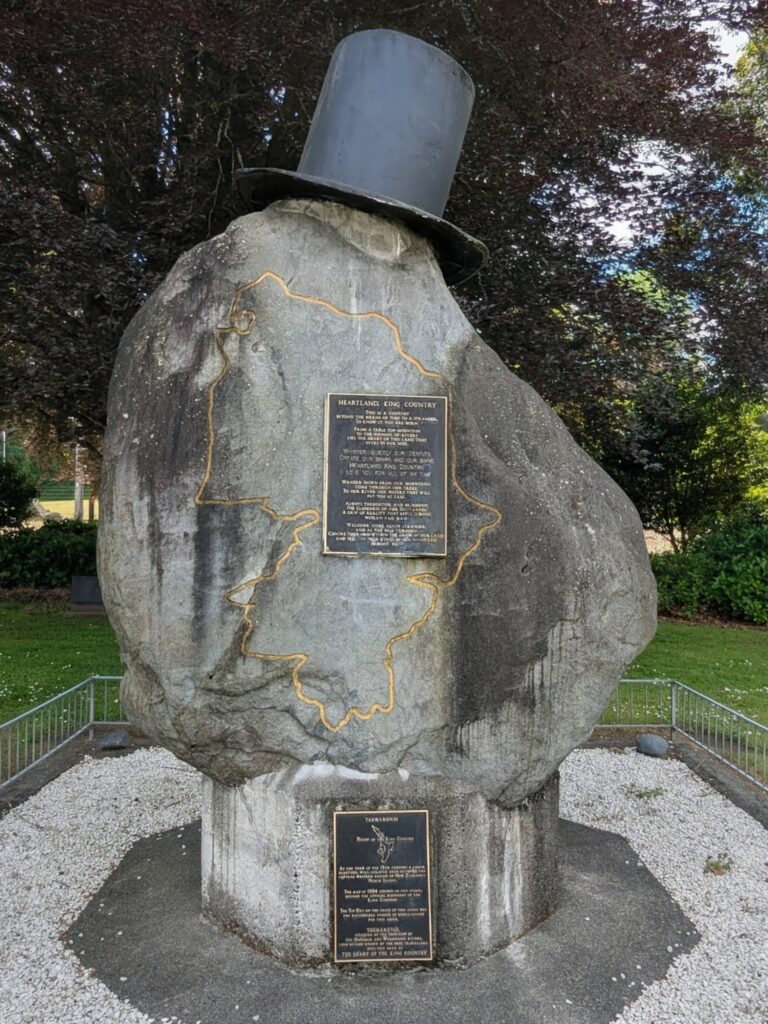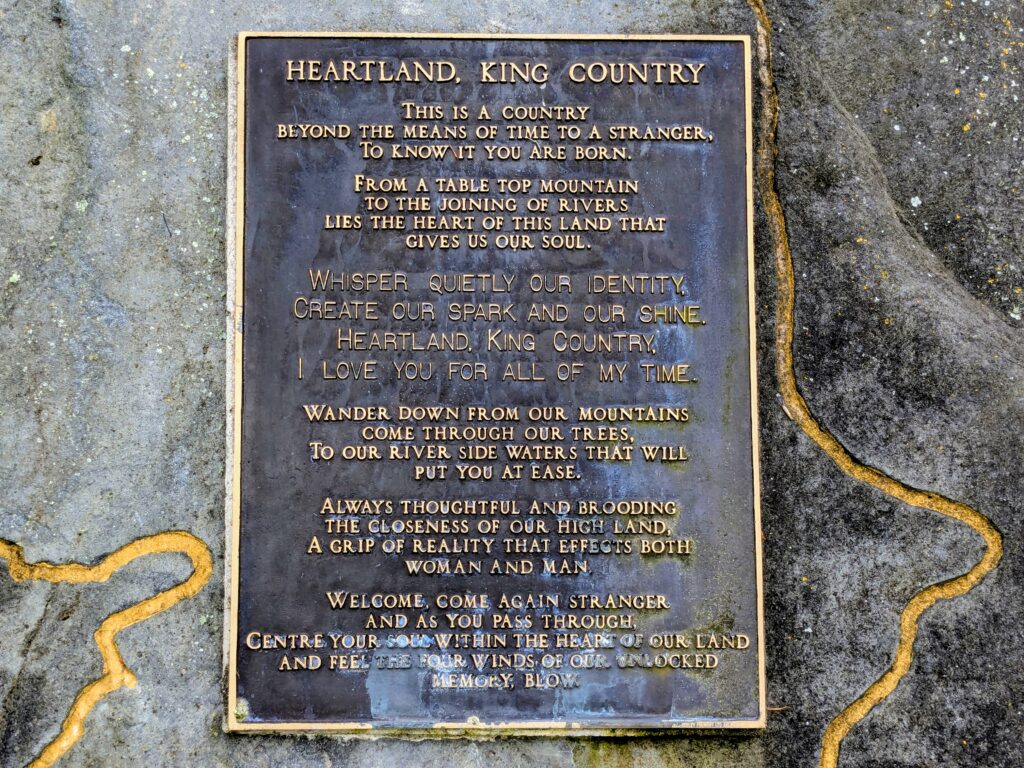Nov 8, 2025 Taumarunui – King Country
This central area of the North Island was one of the last places that colonial British rule penetrated. The geography of the area was rugged, hilly, densely forested and fiercely protected by the Maori tribes. Additionally the ‘New Zealand Wars’ sporadically fought from 1845 to 1872 led to the Kīngitanga movement whereby “Some tribes wanted a Māori king to oversee their affairs, specifically to unite the tribes in maintaining ownership of the land they still controlled. In 1858 Potatau Te Wherowhero became the first Māori king…”. In 1860 he died and his son Tāwhiao inherited the kingship. The Crown did not take this dual monarch plan well and the Governor of NZ demanded that “Tāwhiao submit ‘without reserve’ to Queen Victoria.” War ensued and Tāwhiao and his followers were declared rebels and their land in the Waikato region was confiscated by the Crown. They moved to the Taumarunui area, the lands of their Ngāti Maniapoto relatives. The area became known as ‘King Country’ by Europeans, and by Māori as ‘Te Rohe Pōtae’, which loosely translates as ‘the area of the hat’ – supposedly referring to an incident in which King Tāwhiao defined the area’s boundaries by throwing a hat onto a map.

This monument in the town park bears the outline of King Country and a top hat symbolizing the method by which the boundary was established!
 By 1882 under pressure from the government the local iwi agreed to allow a survey across their land for a railroad. This led to gradual opening of the land to Europeans.
By 1882 under pressure from the government the local iwi agreed to allow a survey across their land for a railroad. This led to gradual opening of the land to Europeans.
Additionally “The Native Land Court, while ostensibly a legal mechanism for land transfer, functioned as a deliberate instrument of colonization. Its design was to dismantle communal Māori land tenure, as articulated by former Attorney-General Henry Sewell, who stated it was intended to ‘destroy if possible, the principle of communism which ran through the whole of their institutions’. This process created systemic economic and social disadvantage for Māori, directly contributing to their ‘virtually landless’ status and the erosion of tribal structures. The profound effects of these policies continue to be addressed through contemporary Treaty settlements, underscoring the long-term impact of historical land dispossession on indigenous communities.” References HERE, HERE, and HERE.
With the railroad in place exploitation of the natural resources quickly ensued and the native forests were decimated. Coal mining was briefly pursued and with the land opened sheep and cattle were introduced. The soil was poor for this purpose and the animals suffered bush sickness, a wasting disease due to poor nutrition. Many farms failed until the application of fertilizer and especially cobalt to the soil improved the conditions. It is a land of boom and bust and is currently experiencing a bit of bust in agriculture but tourism is increasing!

Main street at 6am on a misty morning, quiet and almost empty. The Bakery was open for a hot meat pie breakfast!
